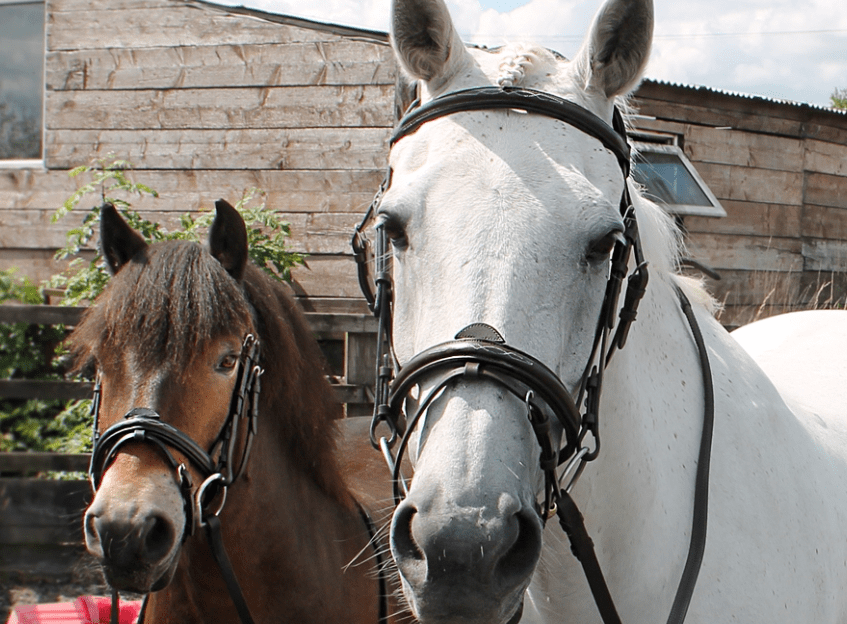The History Of The Bridle
The History Of The Bridle

What is a Bridle?
When it comes to horse riding, one of the most important pieces of equipment is the bridle. A bridle is a fundamental tool used to control and communicate with a horse while riding. It consists of various components that work together to ensure a safe and effective riding experience.
At its core, a bridle is designed to provide control over a horse's head, allowing the rider to guide and direct their movements. It is typically made of leather or synthetic materials, ensuring durability and comfort for the horse. The primary purpose of a bridle is to enable the rider to communicate their intentions to the horse through subtle cues and signals.
The main components of a bridle include the headstall, bit, reins, and sometimes additional features such as a noseband or browband. The headstall is the part that goes over the horse's head, securing the bridle in place. It consists of cheekpieces, a throatlatch, and a browband. The cheekpieces attach to the bit, while the throatlatch helps keep the bridle from slipping off.

The bit is a key element of the bridle, as it rests in the horse's mouth and is responsible for the rider's control. There are various types of bits available, each with its own purpose and level of severity. The choice of a bit depends on the horse's training, temperament, and the rider's preferences.
Reins are attached to either side of the bit and serve as the rider's direct connection to the horse's mouth. They allow the rider to apply pressure or release it, depending on the desired action. Reins are typically held by the rider's hands and are used to steer, stop, and communicate with the horse.
Additional features, such as a noseband or browband, may be included in certain bridles. A noseband is a strap that encircles the horse's nose, providing additional control and stability. It can also help prevent the horse from opening its mouth excessively or evading the bit. A browband is a decorative strap that runs across the horse's forehead, adding aesthetic appeal to the bridle.
In summary, a bridle is an essential piece of equipment for horse riding. It allows the rider to communicate with the horse effectively and ensures control and safety during the ride. Understanding the different components of a bridle and their functions is crucial for any equestrian enthusiast. So, next time you see a horse with a bridle, you'll have a better understanding of its purpose and importance in the equestrian world.
The Origins of a Bridle
The horse bridle, a fundamental piece of equipment used to control and guide horses, has a rich and captivating history that dates back centuries. Let’s delve into the origins of the bridle, exploring its evolution and significance in the equestrian world.
Ancient Beginnings:
The origins of the horse bridle can be traced back to ancient civilizations. The earliest evidence of bridles can be found in ancient Mesopotamia, modern-day Iraq, where horse riding and chariot driving were prevalent. The Mesopotamians crafted simple headpieces made of plant fibres or leather, which were used to control the horse's movements.
Roman Influence:
The Romans played a crucial role in the development of the horse bridle. They introduced the concept of using metal bits, which were placed in the horse's mouth to enhance control. These metal bits were often made of bronze or iron and were designed to exert pressure on the horse's mouth, allowing the rider to communicate commands effectively.
Medieval Innovations:
During the Middle Ages, the horse bridle underwent significant changes and improvements. The concept of the bridle was refined, and the reins were introduced to enhance control. Leather became the primary material for bridles, and intricate designs and decorations were incorporated, reflecting the status and wealth of the rider.
Cultural Variations:
As horse riding spread across different regions and cultures, variations of the bridle emerged. For instance, the Arabian bridle, used by Arabian horse riders, featured a distinctive noseband called a "mecate," which provided additional control and stability. Similarly, the Native American tribes developed their own unique styles of bridles, utilizing materials like rawhide and beads for adornment.
Modern Bridles:
With the advent of industrialization and the rise of equestrian sports, bridles underwent further evolution. New materials such as nylon and synthetic fibres were introduced, offering increased durability and flexibility. Additionally, advancements in bit technology led to the development of more humane bits that focused on horse comfort and communication.
The horse bridle has evolved significantly over time, reflecting the changing needs and preferences of riders. From its humble beginnings in ancient Mesopotamia to the sophisticated and diverse bridles of today, this essential piece of equipment has played a crucial role in the history of horsemanship.
Understanding the origins of the bridle not only deepens our appreciation for its functionality but also highlights the enduring bond between humans and horses throughout the ages.








